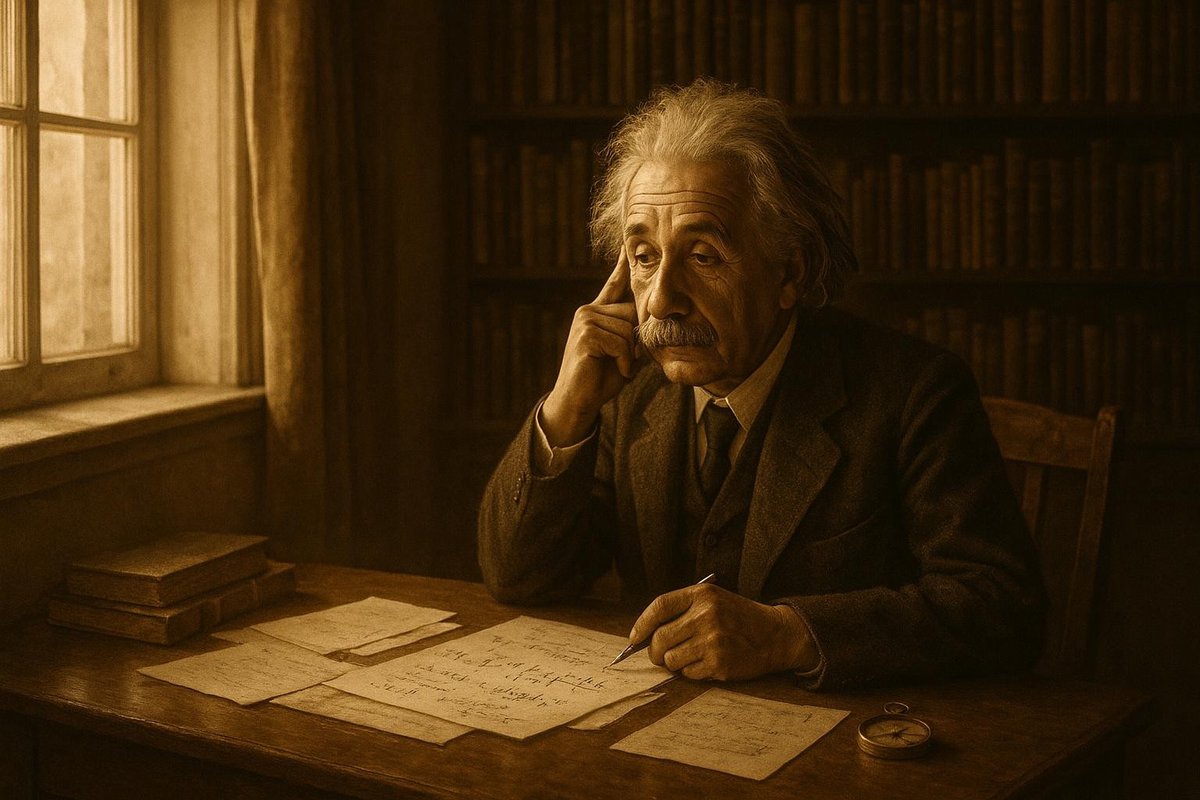
Introduction: A Mind Beyond Boundaries
Imagine a young clerk in a Swiss patent office, seemingly ordinary, yet possessing a mind that would redefine our understanding of the cosmos. This was Albert Einstein, a thinker who dared to ask, ‘What if?’ In an era where physics seemed bound by classical notions, Einstein’s imaginative leaps offered a fresh perspective. His thought experiments became the bridge between abstract ideas and the tangible universe, revolutionizing physics as we know it.
Early Influences: Seeds of Curiosity
Albert Einstein was born in 1879 in Ulm, Germany, and grew up in a world rapidly changing with technological marvels. His early curiosity was sparked by two pivotal experiences:
- Receiving a compass at age five, which ignited his wonder about invisible forces.
- His fascination with geometry, which he described as the ‘holy geometry book.’
These childhood encounters set the stage for his lifelong quest to uncover the universe’s secrets. Interestingly, Einstein was not a top student; he struggled with the rigid schooling system but thrived in self-directed learning. As time went on, he absorbed ideas from books and discussions, turning his doubts into questions that would later change the world.
Mental Models: The Universe Through Thought Experiments
Einstein’s genius lay not just in equations but in his ability to visualize complex concepts. He famously said, ‘Imagination is more important than knowledge.’ His thought experiments became iconic:
- The elevator thought experiment, which led to the theory of general relativity.
- Riding alongside a beam of light, which spurred the theory of special relativity.
These mental models allowed him to transcend conventional thinking. Of course, many people believe that such creativity was a natural gift, but it was also a skill Einstein honed over time. His habit of questioning everything, coupled with his willingness to explore the imaginative, unlocked possibilities others couldn’t see.
Challenges & Resilience: Defying the Norms
Einstein’s journey was not without obstacles. His radical ideas were initially met with skepticism and resistance:
- He faced criticism from established physicists who clung to Newtonian physics.
- His pacifist stance during World War I made him a controversial figure.
Yet, Einstein persisted. He believed in his ideas with an unwavering conviction, driven by a curiosity that transcended societal norms. This resilience not only propelled his theories into acceptance but also inspired a new generation of scientists to think differently.
Legacy: A Mindset that Transcends Time
Einstein’s impact on science is immeasurable, but his legacy extends beyond equations and theories:
- He reshaped how we think about time, space, and energy.
- His work laid the groundwork for modern technologies such as GPS and lasers.
Beyond these tangible contributions, Einstein’s intellectual courage and imaginative approach continue to inspire. He showed that the boundaries of knowledge are not fixed but can be expanded with creativity and perseverance. In a world still grappling with big questions, his mindset remains a beacon for those daring to dream.
Fuel Someone Else’s Curiosity
As you reflect on Einstein’s journey, consider sharing this story with others. Who knows whose imagination you might spark in the process? In the spirit of Einstein, let’s keep questioning, imagining, and exploring the unknowns of our universe.

Leave a Reply